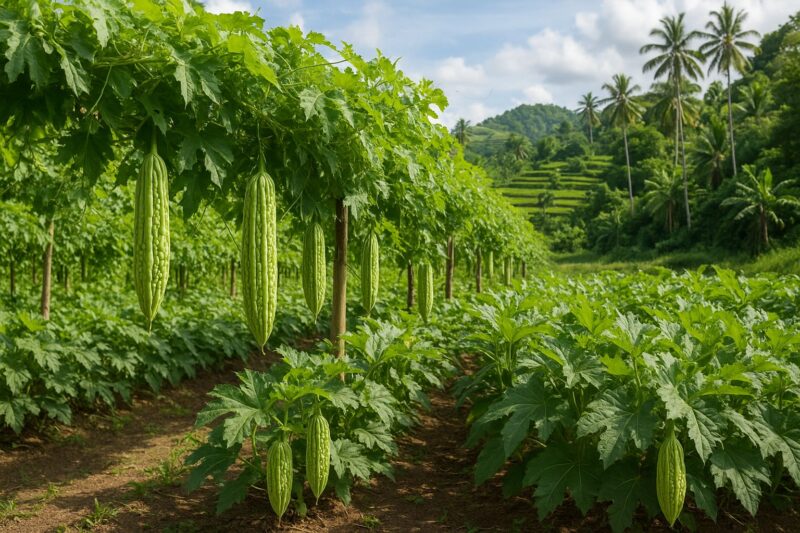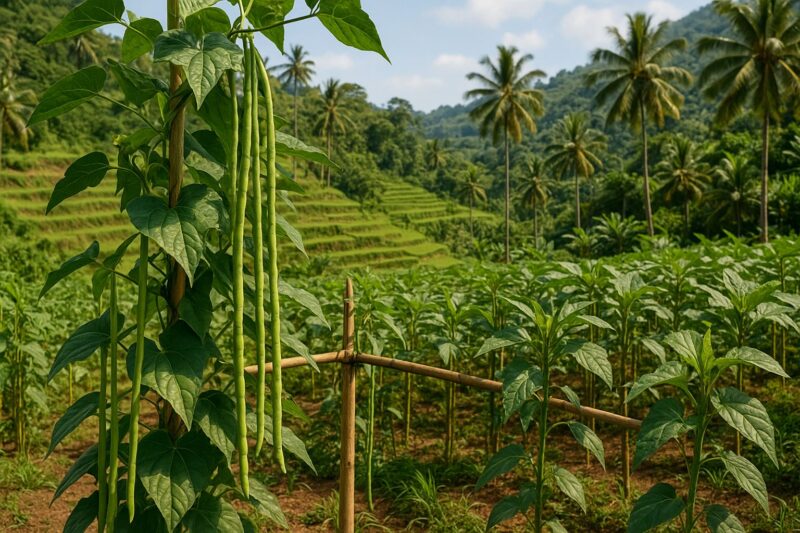Lettuce—those crisp, tender leaves in colorful reds and greens—may seem out of place under tropical skies, yet with careful timing, shade management, and soil care, you can enjoy homegrown salads from Baguio’s cool hillsides to lowland gardens in Bulacan. Unlike hardier greens, lettuce needs cooler temperatures, consistent moisture, and protection from the noon sun. After successful plantings in my own Bulacan garden—and learning tricks from highland growers in Benguet and rooftop farmers in Manila—I’ve distilled an approach that delivers fresh leaf lettuce almost year-round.
Variety Choice
Loose-leaf types—Oakleaf, Red Salad Bowl, and Buttercrunch—are best for tropical gardeners. They mature quickly (25–35 days) and tolerate partial shade. In upland plots around Baguio, growers sometimes try crisphead varieties (similar to iceberg), but in lowland heat I stick to loose-leaf and romaine types like “Green Towers,” which hold together in warmer conditions.
Soil Preparation
Lettuce thrives in loose, friable soil rich in organic matter. In Bulacan’s clay patches, I double-dig beds to 20 centimeters, incorporating two wheelbarrows of homemade compost and a handful of rice hull charcoal per ten square meters to improve drainage. Coastal sandy soils—common in Iloilo—benefit from added coconut coir or aged goat manure to hold moisture but avoid waterlogging. Aim for a pH between 6.0 and 7.0; a light dolomite lime dressing corrects acidity.
Timing and Microclimate
Lettuce loves cool, consistent temperatures—ideally 18–24 °C—so schedule sowing for the coolest months: November through February in lowlands, and extend to March in uplands. In Bulacan, I plant into shaded beds in late November and again in mid-January under temporary shade cloth. In rooftop gardens, orient containers east-facing to capture gentle morning light and avoid harsh afternoon sun.
Sowing and Bed Setup
Broadcast seeds evenly over prepared beds, then rake lightly to cover them one centimeter deep. For neat rows, draw furrows 20 centimeters apart, drop seeds every 5 centimeters, and thin seedlings to 10–12 centimeters spacing once they reach two true leaves. Keep the seedbed moist with light misting twice daily until germination—usually 5–10 days.
Shade and Mulching
Protect young lettuce from midday heat with 30–50 percent shade cloth or interplant with taller crops like corn or okra. Mulch beds lightly with rice straw to conserve moisture, suppress weeds, and moderate soil temperature.
Watering and Feeding
Lettuce has shallow roots; it needs consistent moisture but not waterlogging. I water early each morning, soaking the top 10 centimeters, then check by feel—soil should feel damp and crumble easily. Mulch reduces frequency. At planting, I mix a handful of compost into each row. Four weeks later, I side-dress with compost tea or decomposed chicken manure along the drip line to boost nitrogen for lush leaves. Avoid excessive nitrogen, which can cause spindly growth or bitterness.
Pest Management
Lettuce attracts snails, slugs, and aphids. Handpick snails at dawn or set beer traps. Aphids cluster under leaves; a gentle water spray or mild garlic-soap infusion controls them without harming beneficial insects. Leafminers leave pale trails—remove affected leaves promptly and rotate beds with non-leafy crops like beans to break pest cycles.
Harvesting
You can begin picking loose-leaf varieties once they reach 15–20 centimeters tall—usually 25–35 days after sowing. Snip outer leaves with scissors every 5–7 days, allowing the center to continue growing (“cut-and-come-again”). For romaine, harvest entire heads when firm at 30–35 days; remove at soil level, leaving roots to compost in place.
Case Study
A friend in Benguet intercropped lettuce under high-tunnel plastic to maintain cool temperatures through March. By combining shade and drip irrigation, she extended harvests into April—a period when most lowland areas struggle with heat—demonstrating that microclimate control can stretch your season.
Final Thoughts
Lettuce may require more attention than heartier greens, but homegrown crisp leaves—harvested in the cool of dawn—transform simple salads and sandwiches. Across the Philippines, from mountain terraces to balcony boxes, mastering variety choice, soil health, shade management, moisture, and simple pest controls will reward you with fresh lettuce multiple times each season.
I’m open for consulting and speaking opportunities on sustainable leafy-green production and urban agriculture nationwide. Let’s grow together.
#Lettuce #LeafyGreens #UrbanGardening #PhilippineFarming #SustainableAg #CutAndComeAgain #ConsultingAvailable #SpeakingOpportunities




